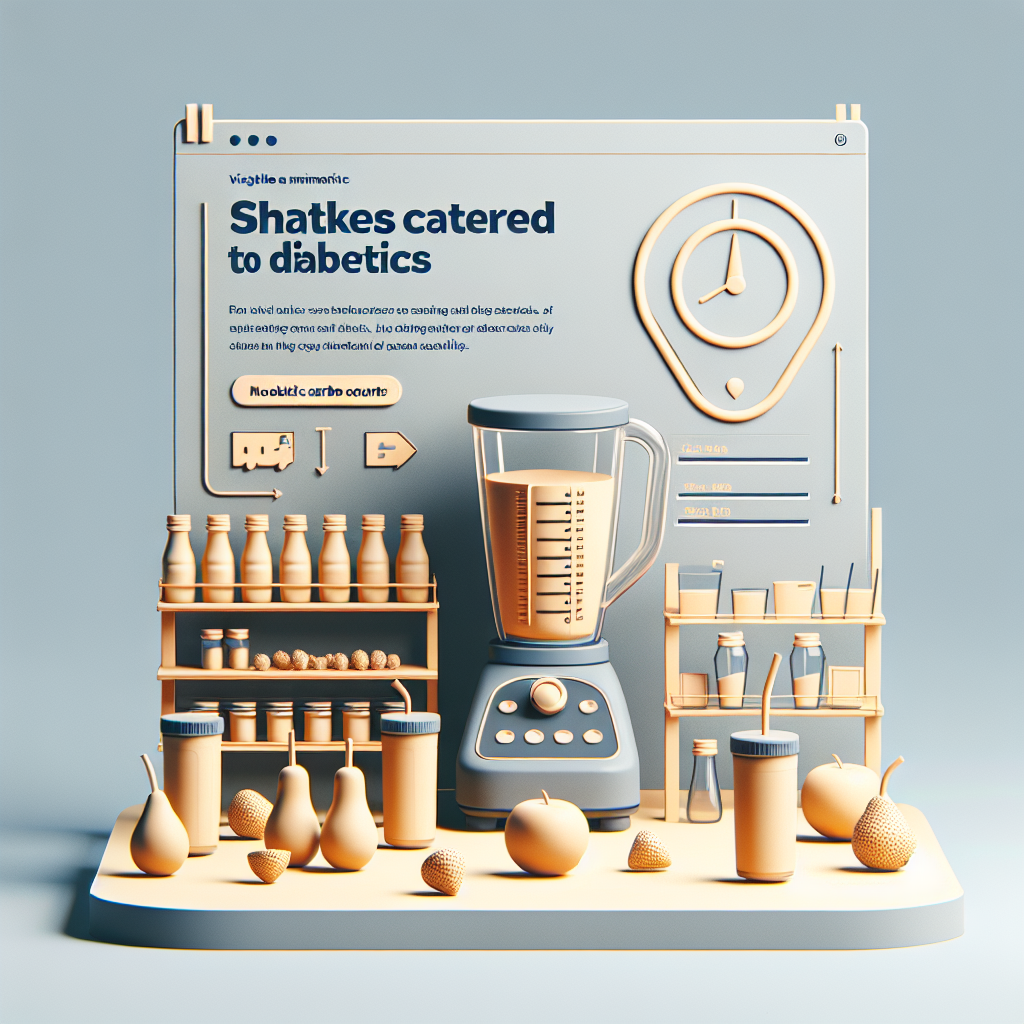Shakes can be a convenient way to manage hunger and deliver nutrients, and many people look for good shakes for diabetics when planning meals. With the right balance of protein, fiber, and low-glycemic carbs, a shake can be a healthy snack or light meal replacement that supports steady blood sugar. This guide covers what to look for, practical recipes, store-bought options, and typical carb counts so you can choose diabetic-friendly shakes with confidence.
Healthy smoothies for diabetics: basics and benefits
A key question is are smoothies good for diabetics? They can be, if formulated to limit rapid glucose spikes. Diabetic friendly smoothies emphasize protein and fiber, include healthy fats, and keep high-sugar fruit portions small. Incorporating ingredients like Greek yogurt, nut butter, chia seeds, and leafy greens transforms a simple smoothie for diabetics into a balanced option that helps control appetite and blood sugar.
Why choose shakes or smoothies?
- Consistent portions make carbohydrate counting easier.
- Protein smoothies for diabetics and nutritional shakes for diabetics help maintain muscle mass and slow digestion.
- Homemade protein shakes for diabetics can be tailored to taste and glucose goals.
What to look for in diabetic shakes and shop picks
When choosing between homemade and store-bought diabetic shakes, compare labels for carbs, added sugar, and protein. Diabetic shake drinks should ideally contain at least 10–15 g of protein and under 20 g of total carbs per serving, with minimal added sugars. Some ready-made diabetic shakes are formulated as meal replacements; these nutritional shakes for diabetics can be useful for travel or busy mornings but read ingredient lists carefully to avoid hidden sugars.
Popular categories include low-carb diabetic shakes, protein smoothies for diabetics, and fortified nutritional drinks. If you prefer fruit-based blends, look for fruit smoothies for diabetics that pair fruit with protein and fiber sources to blunt glucose rises. Diabetic shakes from commercial brands often provide nutrition facts per serving to make carb counting straightforward.
Simple homemade recipes (with approximate carb counts)
Below are easy recipes you can make in a blender. Carb counts are estimates and will vary by brand and portion size—measure ingredients if precise tracking is needed.
- Green Protein Shake (approx. 12–15 g carbs): 1 cup unsweetened almond milk, 1/2 cup plain Greek yogurt, 1 cup spinach, 1/4 avocado, 1 scoop unflavored whey or plant protein, ice. Blend until smooth.
- Berry-Fern Smoothie (approx. 18–22 g carbs): 1/2 cup mixed berries, 3/4 cup unsweetened soy milk, 1 tbsp chia seeds, 1 scoop protein powder, small handful of ice.
- Peanut-Banana Mini Shake (approx. 22–26 g carbs): 1/2 small banana, 1 tbsp natural peanut butter, 1 cup low-fat milk, 1 serving protein powder, cinnamon to taste.
These homemade protein shakes for diabetics use moderate fruit amounts and emphasize protein and healthy fats. For people with type 2 diabetes, smoothies for diabetics type 2 should aim to reduce rapid carbohydrate load while providing satiety.
Tips for choosing and using shakes
- Pair a smoothie with whole-food snacks to avoid overeating later.
- Prefer natural, unsweetened bases (unsweetened milk alternatives, plain yogurt).
- Include at least 10 g protein per serving to support stable blood sugar.
- Limit fruit to 1/2 cup per serving in fruit smoothies for diabetics to control carbs.
Store-bought and medical beverage notes
If you buy ready-made diabetic shakes, check total carbohydrate, fiber, and added sugar. Some products marketed as diabetic shakes contain sugar alcohols or artificial sweeteners; these can affect tolerance for some people. Nutritional shakes for diabetics used as meal replacements may be helpful short-term but consult a dietitian for long-term plans.
For more on structured approaches that combine soups and shakes in diabetes care, see the NHS soup and shake diet approach to reversing type 2 diabetes for a detailed perspective on very-low-calorie interventions and monitoring: NHS soup and shake diet: reversing type 2 diabetes.
For evidence-based guidance on healthy eating with diabetes, consult trustworthy public health resources such as the CDC’s guidance on eating well with diabetes: CDC guidance on healthy eating for people with diabetes.
Quick carb-count reference
- Low-carb shakes: under 15 g total carbs per serving
- Moderate-carb shakes: 15–25 g per serving (useful as a snack)
- Higher-carb fruit smoothies: 25+ g—treat as part of a meal and adjust medication/insulin if needed
Short FAQ
Q: Are smoothies safe for people with type 2 diabetes?
A: Smoothies can be safe when balanced for protein, fiber, and healthy fats. Smoothies for diabetics type 2 should limit high-sugar fruits and include a protein source to slow glucose absorption.
Q: What makes a shake diabetic-friendly?
A: Diabetic friendly smoothies or diabetic shakes prioritize low added sugar, adequate protein, fiber, and healthy fats. That combination helps reduce blood sugar spikes and keeps you full longer.
Q: Can I replace a meal with a shake?
A: Yes—nutritional shakes for diabetics designed as meal replacements can work short-term, but aim for products with balanced macros and vitamins/minerals, and consult a healthcare provider for a long-term plan.






